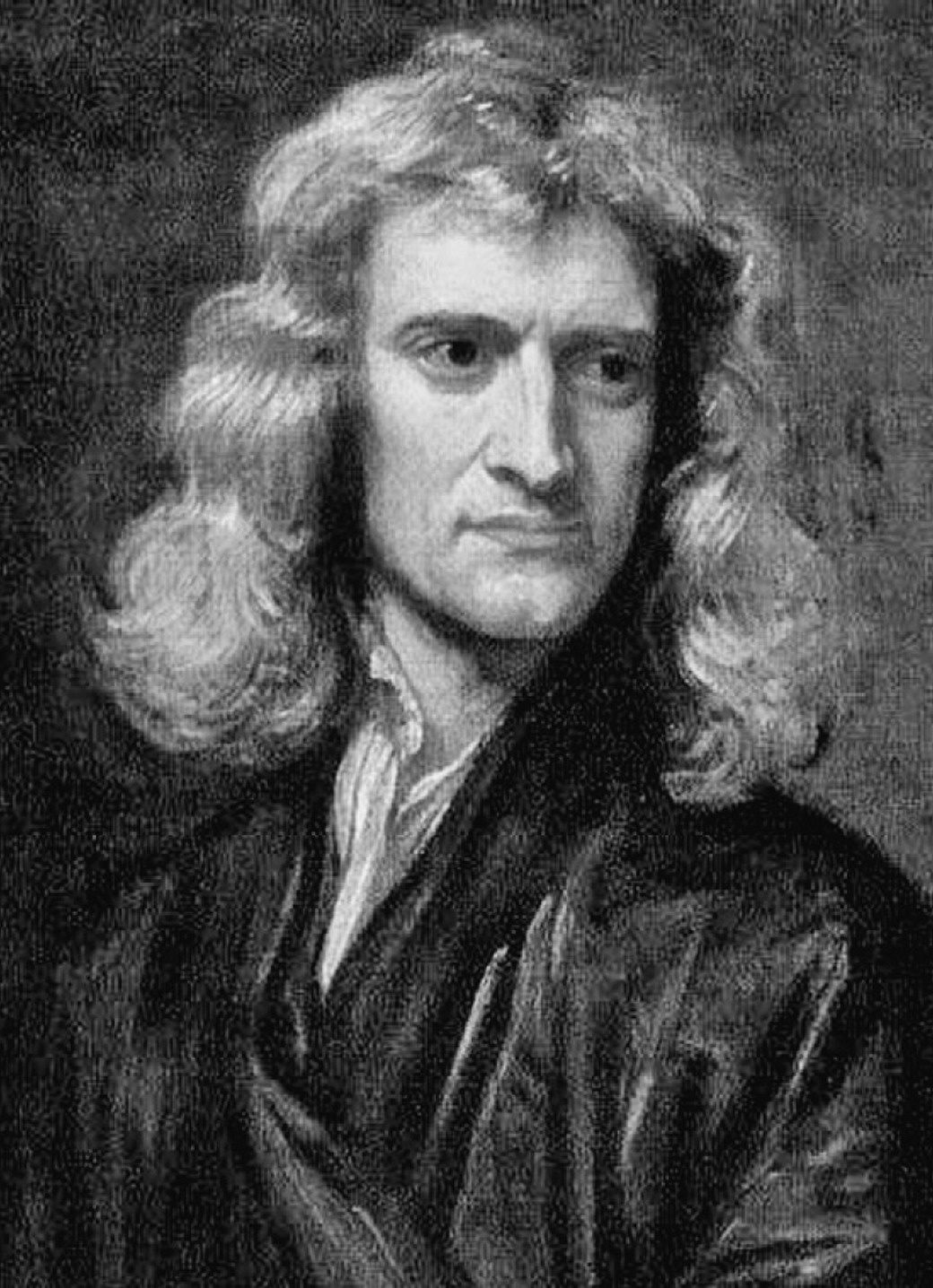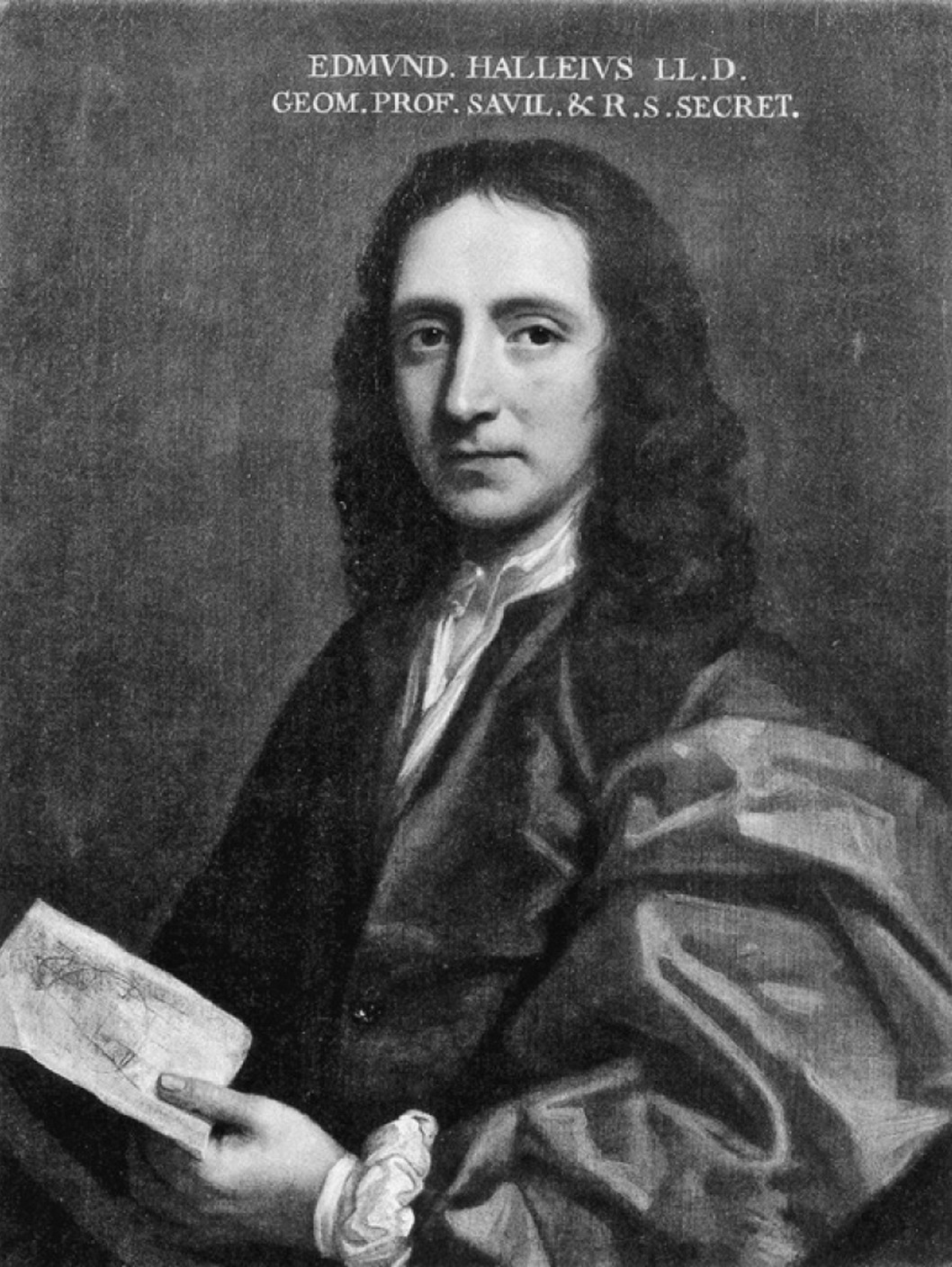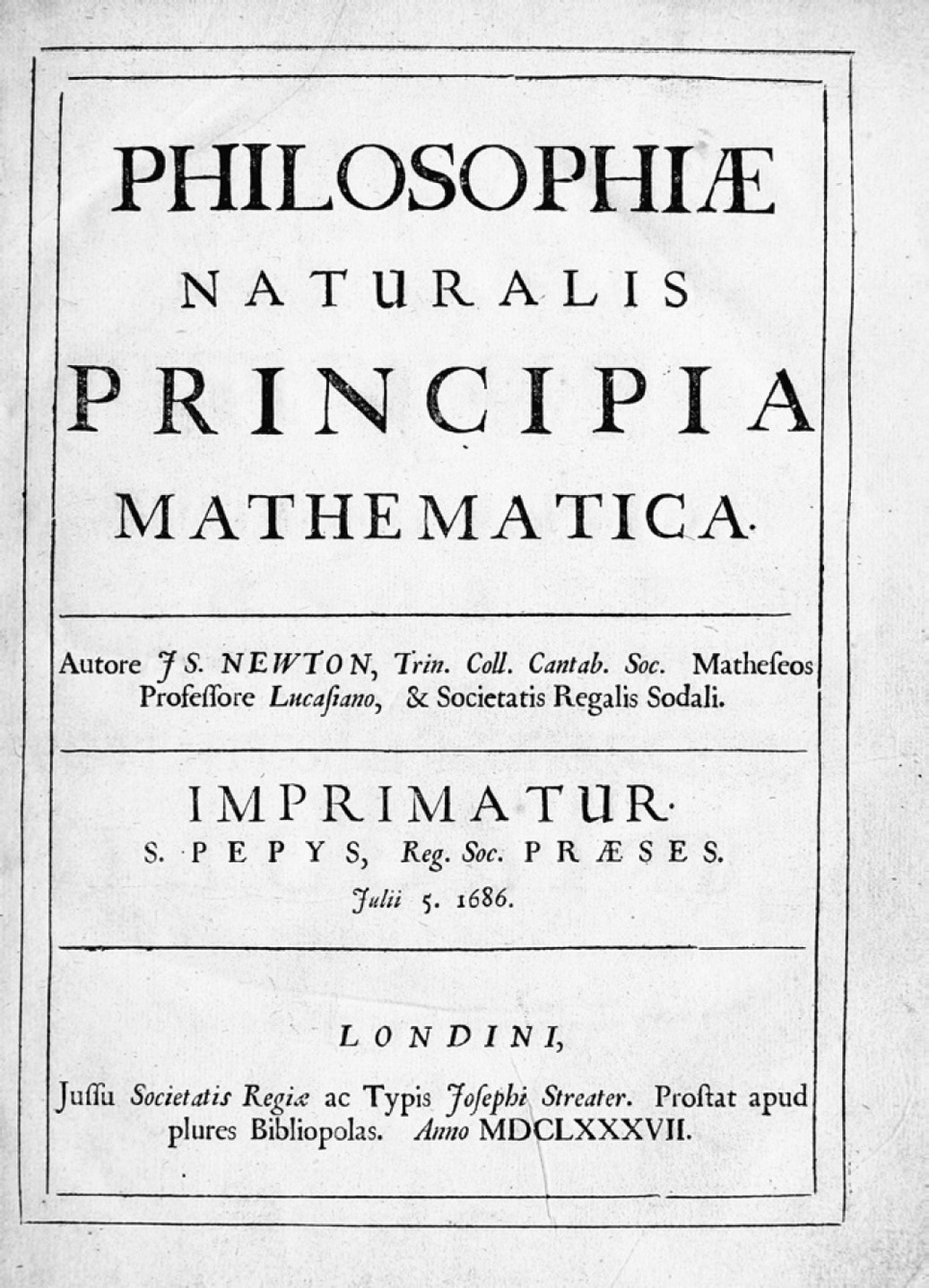

“THE IMMOVABLE ORDER OF THE WORLD”
August 1684, Cambridge.
Edmond Halley had suffered a sad and vexing spring. In March, his father disappeared under suspicious circumstances—a not-altogether-unusual fate in the political turmoil that shot through the last years of the Stuart dynasty’s rule. He was found dead five weeks later. He’d left no will, which forced the younger Halley to spend the next few months dealing with the resulting mess: the twelve pounds owed to his father by a local rector; the three pounds a year promised as an annuity to a woman as part of a real estate transaction; rents to collect and trustees to satisfy. That miserable business consumed him into the summer, and ultimately required a trip to Cambridgeshire to handle face to face those details that couldn’t be resolved from London.
There was nothing happy about the first part of that journey, but once he’d dealt with the legal issues, one unexpected pleasure came his way. In January, before his troubles began, Halley had produced a clever bit of celestial analysis, a calculation that suggested that whatever force held the planets on their paths around the sun grew weaker in proportion to the square of each object’s distance from the sun. But that prompted an immediate question: could that particular mathematical relationship—called an inverse square law—explain why all celestial objects moved down the paths they’d been observed to follow?
The best minds in Europe knew what was at stake in that seemingly technical issue. This was the decisive climax in what we’ve come to call the Scientific Revolution, the long struggle through which mathematics supplanted Latin as the language of science. On the 14th of January, 1684, following a meeting of the Royal Society, Halley fell into conversation with two old friends: the polymath Robert Hooke and the former president of the Society, Sir Christopher Wren. As their talk moved on to astronomy, Hooke claimed he’d already worked out the inverse square law that guided the motions of the universe. Wren didn’t believe him, and so offered both Halley and Hooke a prize—a book worth roughly $300 in today’s money—if either of them could present a rigorous account of such a universal law within two months. Halley swiftly acknowledged that he couldn’t find his way to such a result, and Hooke, for all his bravado, failed to deliver a written proof by Wren’s deadline.
There the matter stuck until, at last, Halley escaped from the wretchedness of postmortem wrangles with his surviving family. His business had taken him east from London anyway—why not detour to the university at Cambridge, there to gain at least an afternoon’s respite in talk of natural philosophy? Coming into town he made his way to the great gate of the College of the Holy and Undivided Trinity. A left onto the college grounds, then right and almost immediately up the stairs would have brought him to the rooms occupied by the Lucasian Professor of Mathematics, Isaac Newton.
To most of his contemporaries, Newton in the summer of 1684 was something of an enigma. London’s natural philosophers knew him as a man of formidable intelligence, but Halley was among very few who counted him as an acquaintance, much less a friend. The public record of Newton’s work was slim. His reputation rested on a handful of exceptional results, mostly transmitted to the secretary of the Royal Society in the early 1670s, but he was irascible, proud, swift to anger, and agonizingly slow to forgive, and an early dispute with Hooke left him unwilling to risk grubby public wrangling. He kept much of his work secret for the next decade—so much so that, as his biographer Richard Westfall put it, had he died in the spring of 1684, Newton would have been remembered as a very talented and rather odd man, and nothing more. But those who made it so far as to be welcome in the rooms on the northeast corner of Trinity’s Great Court would find someone capable of real warmth—and a mind whose power no learned man in Europe could match.


Fashionable portraitist Godfrey Kneller painted the earliest known likeness of Isaac Newton in 1689.
Much later Newton told the story of Halley’s visit that summer day to another friend, and if the old man’s memory wasn’t playing tricks, the two men chatted about this and that for a while. But eventually Halley got down to the question troubling him since January: what about that inverse square relationship? What curve would the planets in their orbits trace, “supposing the force of the attraction towards the sun to be reciprocal to the square of their distance to it?”


Edmond Halley, painted by Thomas Murray around the time Principia was published
“An ellipse,” Newton said instantly.
Halley, “struck with amazement and joy,” asked how his friend knew that answer so surely.
“I have calculated it,” Newton recalled telling his companion, and when Halley asked to see his workings, fumbled among his notes. On that day he claimed he couldn’t find them, and promised to dig them up and send the result to Halley in London. Here, Newton almost certainly lied. The calculation was later found in his papers—and, as Newton may have recognized while Halley waited eagerly in his rooms, it contained an error.
No matter. Newton reworked his sums that fall, and then pressed on. In November, he sent Halley nine pages of dense mathematical reasoning, titled De motu corporum in gyrum—“On the Motion of Bodies in an Orbit.” It proved that what would become known as Newton’s law of gravitation—an inverse square relationship—requires that given certain circumstances, an object in orbit around another must trace out an ellipse, just as the planets of our own solar system were known to do. Newton went further, sketching the beginnings of a general science of motion, a set of laws that could, deployed properly, describe the how, the where, and the when of every bit of matter on the move anywhere—everywhere—in the cosmos.
The pamphlet was more than Halley had expected when he first goaded Newton into rethinking old thoughts. Once he read it, though, he understood immediately its larger significance: Newton hadn’t just solved a single problem in planetary dynamics. Rather, Halley grasped, his friend had sketched something much greater, a newly rigorous science of motion of potentially universal scope.
Newton too grasped the opportunity before him. He was famously reticent, and he had published almost nothing for more than a decade. But this time he surrendered to Halley’s encouragement, and began to write with the explicit intention of telling the world what he knew. For the next three years he developed a description of nature based on quantitative laws, applying those ideas to a whole range of problems of motion. As he completed each of the first two parts, he forwarded the manuscript to Halley, who took on the heroic double duty of preparing the dense mathematical texts for the printer while continually prodding Newton to get on with it, to deliver what he already knew would be the book of the age. Finally, in 1687, Halley received Newton’s conclusion, the third section of the work, immodestly and accurately titled “On the System of the World.”
This was the main event, nothing less than Newton’s demonstration that his new science could encompass the universe. He took all the equations, the geometrical demonstrations, all the proofs he’d worked out to describe motion and produced a detailed, mathematically precise account of the behavior of the night sky, beginning with an analysis of the moons of Jupiter. He worked his way through the solar system, eventually returning home, to the surface of the earth. There he revealed a gloriously elegant result, an account of the way the gravitational tugs of the moon and sun produced the seemingly intractably complex action of the tides, turning the rise and fall of the sea into rigorous, calculable, scientific order.
He could have stopped there. It would have made sense, leading readers to rest at the natural end of one of the greatest stories ever told: an odyssey through the heavens above (those tiny, naked-eye-invisible motes circling Jupiter) to the earth below, our home, with every vista along the way accounted for by the workings of a handful of simply expressed laws.
There was, however, one more matter Newton chose to address before the last leaves of his manuscript could be released into Halley’s hands. Comets had first brought Halley and Newton together: they had met after both had chased the bright comet of 1682—the one we now know as Halley’s.*1 But in the last months of his work on Principia, a different object held Newton’s attention: the Great Comet of 1680, discovered by the German astronomer and calendar maker Gottfried Kirch.
Kirch’s comet was itself something of a milestone within the scientific revolution. On the night of November 14, 1680, Kirch had begun his regular night’s work looking for something else entirely, mapping stars as part of a long-running observing program. That evening, he pursued his usual sequence: guiding his telescope to the first object of the night, taking notes, tracing the familiar patterns. Then his telescope shifted a little and something new appeared: “a sort of nebulous spot, of an uncommon appearance.” He held on the stranger, tracking it long enough to be sure. It was no star. Rather, he’d found a vagabond, a comet—the first to be discovered using that icon of scientific discovery, the telescope.
For Newton the comet of 1680 offered a unique opportunity. He already knew the shapes of the planetary orbits he analyzed with his new mathematical laws—but this previously unknown visitor presented a novel challenge: could his universal gravitation account for motion no one had seen before? He set up his analysis by first plotting the path of Kirch’s comet as revealed in reports from credible observers. He drew a line that connected each observation to reveal its track: a particular kind of curve called a parabola. Parabolas are mathematically kin to the ellipses traced out by the planets and moons Newton had just analyzed. The key difference: ellipses are closed curves; the earth, the planets, Halley’s comet, NASCAR drivers*2 retrace their path with every trip round their oval courses. Not so any object on a parabolic path. Parabolas are open-ended, following lines that start out there, bend round a focus (the sun, for the comet of 1680), and shoot off again on a course that will never return to the old neighborhood.
Newton made sure every reader really, really understood that yes, the comet of 1680 rode a parabola in and out of the solar system. At the end of a very long and difficult book, he devoted page after page to detailed lists of observations from all those comet hunters who had chased it through the constellations. He left nothing out—it was as if he wanted to cudgel his readers into silent agreement. By the end of his account no one could possibly doubt: the comet of 1680 roared in from who-knew-where, rounded the sun…and then vanished into the unmapped vastness beyond, never, apparently, to return.
And then he performed one last feat. He extracted just three observations from his catalogue, three points on the comet’s trajectory, and used his new mathematical model of force and motion to derive the orbit of that comet. He calculated, and the answer came back a perfect match: his results graphed onto that same course all those observers had found: a parabola.*3 Strip away the technical complexity—all those conics and curves and calculus masquerading as geometry—and what remained was the triumph, not just Newton’s, but that of a whole new way of grasping the material world.
The account of the comet of 1680 gives his book its true climax. It was cosmic proof that the same laws that governed ordinary experience—the apple’s fall, an arrow’s flight, the moon’s constant path—ruled all experience, to the limits of the universe. A parabola has no end nor beginning: One arm comes from the infinitude of the plane; the other arm shoots off to the same infinity. Placed in the material world, formed by the motion of a comet swinging around the sun, the parabolic motion of the comet of 1680 traces out not just the events that take place in our immediate vicinity, but throughout the universe, from its deepest reaches and back out to them again.
Newton knew exactly what he had done. Near the end of the section on comets, he wrote: “The theory that corresponds exactly to so nonuniform a motion through the greatest part of the heavens, and that observes the same laws as the theory of the planets, and that agrees exactly with exact astronomical observations cannot fail to be true.”
Edmond Halley agreed. Three years after he’d innocently asked for a single proof, he delivered to the printer the last pages of what Newton again immodestly, again accurately, titled Philosophiae Naturalis Principia Mathematica—The Mathematical Principles of Natural Philosophy. Getting Newton’s enormous manuscript into book form while dealing with its ever-fractious author had left no time for Halley’s own work since 1684, but now, at the finishing line, he granted himself his own victory lap. As Principia went to press, he exercised his editor’s privilege to preface Newton’s prose with a poetic assessment of the great work and its author: “But we are now admitted to the banquets of the gods/We may deal with the laws of heaven above; and we now have/The secret key to unlock the obscure earth; and we know the immovable order of the world/…Join me in singing the praises of Newton, who reveals all this,/Who opens the chest of hidden truth.”
Hidden truths made plain! That was no poetic license. Amid all the talk of gods and heaven, Halley got it right. Newton had promised his readers the system of the world—and this is in fact what they received, a way to investigate matter in motion throughout the cosmos, to the utter limit of space and time. As the great French mathematician Joseph-Louis Lagrange famously said, “Newton was the greatest genius who ever lived, and the most fortunate; for we cannot find more than once a system of the world to establish.”


Title page from the first edition of Principia
Sir Isaac Newton died in 1727. Alexander Pope responded with his famous epigram: “Nature and nature’s ways lay hid in night./God said, ‘Let Newton be,’ and all was light.” By the turn of the next century such apparent hyperbole would seem no more than predictable British understatement.
*1 That object follows its own elliptical path—a much more elongated version of the orbits taken by the major planets—and it completes a single journey around the sun about every seventy-six years. Halley would later crack its true nature as a repeat visitor by analyzing historical sightings within Newton’s gravitational mathematics in one of the early triumphs of the new science.
*2 For the record: the closed curved tracks on which NASCAR races are run generally are not perfect ellipses.
*3 Newton later returned to the question of the true orbit of the comet of 1680, considering the possibility that it followed not a parabolic orbit, but instead a very elongated, long-period elliptical one. He was never able to derive such an orbit with confidence, though he believed it could have been a returning comet with a 575-year orbit. More recent analyses put the possible period on the order of ten thousand years.